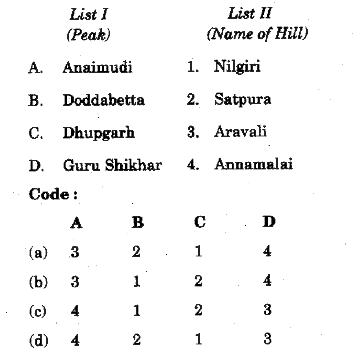Match the List -I with List -II and select the correct answer using the codes given below the lists .
List-IList-II(A)Coagulation(1)Scattering(B)Lyophilization(2)Washing of precipitates(C)Peptization(3)Purificationof colloids(D)Tyndall effect(4)Electrolyte
ABCD4321
ABCD2134
ABCD3124
ABCD4312
The correct Answer is:A
Step by step video, text & image solution for Match the List -I with List -II and select the correct answer using the codes given below the lists . {:("List-I","List-II"),((A) "Coagulation",(1)"Scattering"),((B)"Lyophilization",(2)"Washing of precipitates"),((C)"Peptization",(3)"Purificationof colloids"),((D)"Tyndall effect",(4) "Electrolyte "):} by Chemistry experts to help you in doubts & scoring excellent marks in Class 12 exams.
Topper's Solved these Questions
- BOOK - NARAYNACHAPTER - SURFACE CHEMISTRY EXERCISE - EXERCISE -2 (H.W. ) ADSORPTION5videos
SURFACE CHEMISTRY
- BOOK - NARAYNACHAPTER - SURFACE CHEMISTRY EXERCISE - EXERCISE -2 (H.W. ) CATALYSIS5videos
SURFACE CHEMISTRY
- BOOK - NARAYNACHAPTER - SURFACE CHEMISTRY EXERCISE - EXERCISE -2 (C.W. ) ADSORPTION23videos
SURFACE CHEMISTRY
- BOOK - NARAYNACHAPTER - SOLUTIONS & COLLIGATIVE PROPERTIES EXERCISE - EXERCISE : 426videos
SOLUTIONS & COLLIGATIVE PROPERTIES
Similar Questions
Match List I with List II and select the correct answer using the codes given below the lists :
 View Solution
View SolutionMatch List -I with List -II and select the correct answer using the code given below the lists:
 View Solution
View SolutionMatch List -I with List -II and select the correct answer using the code given below the lists:
 View Solution
View SolutionMatch List I with List II and select the correct answer using the code given below the lists:
 View Solution
View SolutionMatch List I with List II and select the correct answer using the code given below the lists:
 View Solution
View SolutionMatch List I with List II and select the correct answer using the code given below the lists:
 View Solution
View SolutionMatch List-I with List-II and select the correct answer using the code given below the Lists :
 View Solution
View SolutionMatch List I with List II and select the correct answer using the code given below the Lists:
 View Solution
View SolutionMatch List-I with List-II and select the correct answer using the code given below the Lists :
 View Solution
View SolutionMatch List-I with List-II and select the correct answer using the code given below the Lists :
 View Solution
View Solution
